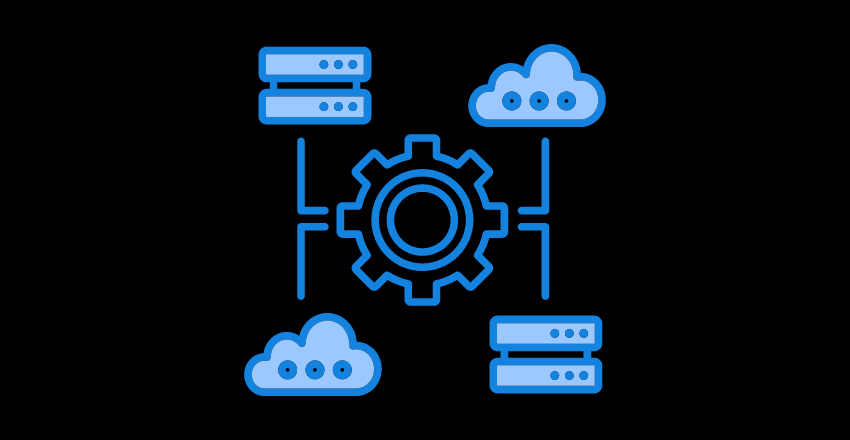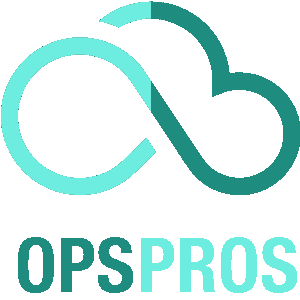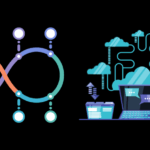In today’s fast-paced technology landscape, DevOps has emerged as a game-changer for businesses looking to streamline their IT operations. DevOps is a set of practices that emphasize collaboration and communication between development and IT operations teams to enable faster and more reliable delivery of software. However, navigating the world of DevOps can be overwhelming, with a complex set of terminologies and jargon specific to the discipline. Building a comprehensive DevOps glossary is essential to understanding key terms and concepts, making it easier for professionals to communicate and work effectively.

Key Takeaways
- A DevOps glossary is essential to understand the key terminologies and concepts specific to DevOps.
- Building a comprehensive DevOps glossary can help professionals navigate the complex world of DevOps.
- Understanding key DevOps terms and jargon is essential to effective communication and collaboration between development and IT operations teams.
What is DevOps?
DevOps is a methodology that combines software development (Dev) and IT operations (Ops) to improve the speed and quality of software delivery. It focuses on collaboration, automation, and measurement, enabling organizations to deliver new features and applications more quickly and efficiently.
At its core, DevOps seeks to break down the traditional silos between development and operations teams, fostering a culture of communication and collaboration. By working together, these teams can streamline processes, identify and fix issues more quickly, and focus on delivering value to customers.
Devops Terms You Should know
Continuous Integration (CI)
Continuous Integration (CI) is a core practice in the DevOps methodology that involves merging code changes into a central repository and automatically building and testing them. The ultimate goal of CI is to ensure that changes are integrated and tested quickly, helping identify and resolve issues early in the development cycle.
CI is often facilitated by a continuous integration server that performs automated build and test processes whenever changes are pushed to the repository. This process helps teams catch errors early in the development cycle, reducing the risk of conflicts that could cause delays or quality issues.
CI plays a critical role in enabling teams to deliver software on a frequent and regular basis, ultimately improving the efficiency and quality of the development process. By automating many of the manual tasks involved in building and testing software, CI allows teams to focus on higher-level tasks such as feature development and innovation.
Continuous Deployment (CD)

Continuous Deployment (CD) is a DevOps practice that involves automatically deploying code changes to production environments. Unlike Continuous Integration, which focuses on building and testing code changes, CD takes the process one step further by automating the deployment process. This approach helps to reduce lead time and improve the frequency of releases.
CD relies on a number of tools and frameworks to automate the deployment process, including containerization technologies like Docker and Kubernetes. These tools enable teams to deploy new code updates with minimal downtime, ensuring that users have access to the latest features and improvements as soon as they become available.
One of the key benefits of CD is the ability to implement changes quickly and efficiently, without sacrificing quality or stability. By automating the deployment process and using advanced monitoring tools, teams can detect and resolve issues in real-time, minimizing the risk of downtime or service interruption.
Continuous Deployment vs. Continuous Delivery
It’s worth noting that Continuous Deployment is often confused with Continuous Delivery, which refers to the practice of delivering code changes to a production-like environment for testing and review. Unlike Continuous Deployment, which automatically deploys code changes to production, Continuous Delivery allows teams to review and approve changes before they go live.
While both practices share similar goals, they differ in terms of the level of automation involved. Continuous Deployment is ideal for teams that need to deploy changes quickly and efficiently, while Continuous Delivery provides more control and oversight over the deployment process.
Infrastructure as Code (IaC)
Infrastructure as code (IaC) is a DevOps practice that involves managing and provisioning infrastructure through code rather than manually configuring individual servers or components. With IaC, teams can use code to define infrastructure components such as servers, networks, and storage, which can then be created and managed programmatically.
IaC provides several benefits to DevOps teams, including:
- Automation: IaC enables teams to automate the provisioning and configuration of infrastructure components, reducing the risk of human error and increasing consistency.
- Scalability: With IaC, teams can easily create multiple instances of infrastructure components with minimal effort, making it easier to scale applications and services based on demand.
- Reusability: Code that defines infrastructure components can be reused across different environments, making it easier to maintain consistency and reduce duplication of effort.
There are several popular tools and frameworks used in the industry for IaC, such as Terraform, AWS CloudFormation, and Ansible. These tools provide different features and capabilities, but they all make it easier for teams to manage infrastructure programmatically.
Orchestration

Orchestration is a critical component of DevOps, enabling the coordination of different parts of an application or system. It involves automating the deployment, scaling, and management of various services and components.
In an orchestration workflow, each component is treated as a building block that can be combined and arranged in different ways to create a complex system. This approach allows for greater flexibility and scalability, as additional components can be easily added or removed as needed.
Orchestration tools are used to manage and automate the deployment of these building blocks. Some of the popular tools used for orchestration in DevOps include Kubernetes, Docker Swarm, and Apache Mesos. These tools enable organizations to deploy and manage applications across different environments, including on-premises, cloud, and hybrid environments.
Microservices
Microservices architecture is a way of designing and building software using a collection of small, independent services that communicate with each other through APIs. This approach emphasizes modularity, flexibility, and scalability, allowing teams to work on different parts of the system simultaneously.
Microservices can be deployed and scaled independently, enabling faster and more frequent releases. They also make it easier to adopt new technologies or update existing ones without affecting the entire system. This approach can lead to increased agility, reduced costs, and better overall performance.
Some popular microservices frameworks and technologies include Spring Boot, Netflix OSS, and Kubernetes.
DevOps Tools
In the complex world of DevOps, having the right tools is essential for success. DevOps tools help automate processes, improve collaboration, and increase efficiency. In this section, we will provide a brief overview of some popular DevOps tools used in the industry.
| Tool | Purpose |
|---|---|
| GitHub | Version control and collaboration for software development |
| Jenkins | Continuous integration and delivery automation |
| Docker | Containerization for application deployment and scaling |
| Kubernetes | Container orchestration for managing containerized applications |
| Nagios | Continuous monitoring of IT infrastructure and applications |
These tools are just a small selection of the many available for DevOps professionals. Each tool has its own strengths and weaknesses, and it is important to choose the right tool for the job. Some other popular DevOps tools include Ansible, Terraform, Chef, Puppet, and GitLab.
It’s also worth noting that many DevOps tools are open-source and have active communities that contribute to their development and support. This means that users can benefit from ongoing improvements and innovations for free.
Continuous Monitoring
Continuous monitoring is an essential practice in the DevOps world, enabling teams to detect and resolve issues in real-time. By monitoring applications and systems constantly, teams can ensure that they are performing optimally and identify any potential problems before they escalate.
Continuous monitoring involves collecting and analyzing data from various sources, such as logs, metrics, and events. This data is used to provide insights into system performance, identify issues, and trigger automated responses if necessary.
There are various tools and techniques used for continuous monitoring, such as monitoring dashboards, alerts, and automated tests. These tools help teams keep track of key performance indicators and quickly identify any anomalies in the system.
One popular tool for continuous monitoring is Prometheus, an open-source monitoring system that collects and stores metrics from various sources. It provides a flexible query language and visualization options, making it easy to analyze and understand system performance.
Another useful technique for continuous monitoring is canary testing, where a small subset of users are exposed to new features or changes before they are rolled out to the wider audience. This technique helps teams detect any issues early on and make necessary adjustments before wider release.
In conclusion, continuous monitoring is a critical practice in DevOps, helping teams ensure optimal system performance and detect and resolve issues in real-time. By leveraging the right tools and techniques, teams can keep their systems running smoothly and deliver high-quality software to their customers.
DevOps Culture
One of the key factors in successful DevOps implementation is fostering a strong DevOps culture. This culture involves collaboration and communication between teams and individuals, breaking down silos, and continuous learning and improvement.
DevOps culture emphasizes the importance of transparency, accountability, and ownership. Teams are encouraged to take ownership of their work and to be accountable for both successes and failures. This creates a culture of trust, where individuals feel empowered to experiment and take risks in the pursuit of innovation.
One way to foster a positive DevOps culture is to invest in cross-functional training and development. By training team members on different aspects of the DevOps process, organizations can create a shared understanding and vocabulary among teams. This helps to break down silos and fosters a collaborative environment.
Another important aspect of DevOps culture is a commitment to continuous improvement. This involves a willingness to learn from mistakes and to make changes based on feedback. By creating a culture of continuous learning and improvement, organizations can stay nimble and adapt to changing market conditions and customer needs.
Overall, a strong DevOps culture is essential for successful implementation. By emphasizing collaboration, transparency, and continuous improvement, organizations can create a culture that fosters innovation and agility, ultimately driving business success.
Conclusion

DevOps is a complex field that requires a deep understanding of the key terms and concepts that underpin its principles and practices. A comprehensive DevOps glossary can help professionals navigate this complexity and achieve success in their roles.
Throughout this article, we have explored some of the essential terms and concepts in DevOps, including continuous integration, continuous deployment, infrastructure as code, orchestration, microservices, and more. We have also discussed some of the essential tools and techniques used in DevOps, as well as the importance of fostering a strong DevOps culture.
We hope that this DevOps glossary has provided you with a solid foundation for understanding and mastering DevOps concepts. As you continue to explore this exciting field, we encourage you to continue learning and growing your understanding of DevOps.
FAQ – DevOps Glossary

Q: What is DevOps?
A: DevOps is a term that refers to the combination of development and operations practices in software development. It aims to streamline the software development process, improve collaboration between developers and operation teams, and enhance the speed and quality of software releases.
Q: What are some key terms in DevOps?
A: Some key terms in DevOps include developer, software development, continuous delivery, pipeline, version control, reliability, and Amazon Web Services.
Q: What is a developer in the context of DevOps?
A: In the context of DevOps, a developer refers to an individual responsible for writing, testing, and maintaining software code. Developers play a crucial role in the software development process and work closely with other team members to ensure the successful delivery of software.
Q: What is a pipeline in DevOps?
A: In DevOps, a pipeline refers to a set of processes and tools that automate the stages of software delivery. It involves the integration, testing, deployment, and monitoring of software code to ensure a smooth and efficient software release.
Q: What is reliability in DevOps?
A: Reliability in DevOps refers to the ability of a system or software application to consistently perform its intended function under specific conditions. It involves factors such as uptime, performance, scalability, and fault tolerance.
Q: What is version control in DevOps?
A: Version control in DevOps is a system that enables developers to manage and track changes to source code over time. It allows multiple developers to work on the same codebase simultaneously, maintain a history of changes, and easily revert to previous versions if needed.
Q: What is Amazon Web Services (AWS) in DevOps?
A: Amazon Web Services (AWS) is a cloud computing platform that offers a wide range of services and tools for DevOps practitioners. It provides infrastructure, storage, and various other services that enable teams to build, deploy, and manage applications efficiently.
Q: What are common DevOps terms that you should know?
A: Common DevOps terms that you should know include agile, operating system, virtual machine, development practice, fully automated, DevOps engineer, software release, software development practice, terms you need to know, delivery pipeline, configuration management, development teams, code into a shared, software architecture, software engineering, software testing, agile software development, software design, software builds, software developers, software development process, development and deployment, test cases, test automation, sends, and receives messages.
Q: What is a software release in DevOps?
A: In DevOps, a software release refers to the process of deploying a new version of software to production. It involves packaging the software, deploying it to the target environment, and ensuring its stability and functionality.
Q: What is a software development practice in DevOps?
A: A software development practice in DevOps refers to the structured approach and set of processes followed by development teams to create software applications. It includes activities such as requirements gathering, design, coding, testing, and deployment.
James is an esteemed technical author specializing in Operations, DevOps, and computer security. With a master’s degree in Computer Science from CalTech, he possesses a solid educational foundation that fuels his extensive knowledge and expertise. Residing in Austin, Texas, James thrives in the vibrant tech community, utilizing his cozy home office to craft informative and insightful content. His passion for travel takes him to Mexico, a favorite destination where he finds inspiration amidst captivating beauty and rich culture. Accompanying James on his adventures is his faithful companion, Guber, who brings joy and a welcome break from the writing process on long walks.
With a keen eye for detail and a commitment to staying at the forefront of industry trends, James continually expands his knowledge in Operations, DevOps, and security. Through his comprehensive technical publications, he empowers professionals with practical guidance and strategies, equipping them to navigate the complex world of software development and security. James’s academic background, passion for travel, and loyal companionship make him a trusted authority, inspiring confidence in the ever-evolving realm of technology.







